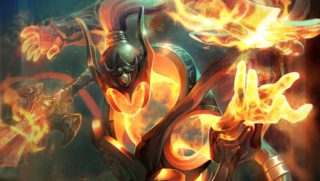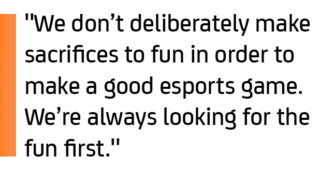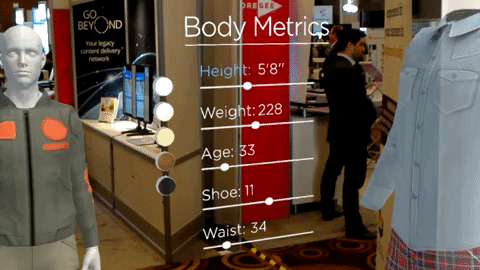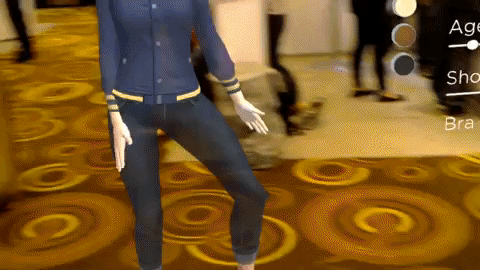Hi-Rez Studios, makers of the popular competitive games Smite and Paladins, is steadily expanding its portfolio. Earlier this year, the company hosted the Hi-Rez Expo—a convention that now features multiple esports tournaments. There, attendees got first looks at two spin-off games based on Hi-Rez’s flagship title, Smite, a MOBA game where gods from different pantheons battle each other. The first game, Smite Rivals, brings these gods to the mobile gaming space, while the second game—titled Hand of the Gods: Smite Tactics—takes an altogether different approach with the IP by being a turn-based tactical strategy game with collectible card game (CCG) elements.
Smite Tactics is currently in beta and its featured pantheons include Greek, Egyptian, Norse and Chinese mythologies, which are the main staples of Smite. Players control the movements of these gods while using cards to summon creatures and cast spells to battle their opponents. It’s a game that demands slower pacing than the action game that inspired it, but it also marks a bold move for the company by entering into the CCG space. According to findings from SuperData, digital collectible card games will earn $1.4 billion in 2017, led by Hearthstone.

Scott Zier, executive producer for Hand of the Gods: Smite Tactics, describes the game as “a turn-based collectible card game that’s based in the Smite universe. Really, it’s a game that’s about building decks, deploying units on the battlefield, and fighting.”
AListDaily sat down with Zier to talk about why Hi-Rez is making a strategy game out of Smite and how these gods might compete in the crowded CCG market.
Changing Genres
When asked about what led to the development of a tactical strategy CCG game, Zier said, “I think there are a lot of inspirations. For me and Scott Lussier, the lead designer, we’ve wanted to do a turn-based game for a while. We play a lot of turn-based games and he has a lot of history with CCGs, I have history games like Civilization, and we were playing a lot of different games at the time. So, we thought it would be cool to do something like that with the Smite characters.”
The game started as a paper prototype, created in Zier and Lussier’s free time, and the two ended up enjoying it so much that they pitched it as a full game. In talking about whether they thought making a strategy game from an action game was a risky move for the IP, Zier said “It was definitely stretching our boundaries, since we’ve only done action-based games for the most part. But the development team plays all kinds of games from different genres, and we’re all avid gamers.”
Zier also admitted that, having made so many action games, creating Smite Tactics was more of a technical challenge than a design one. But “a lot of the pieces came together very well,” he added. “With us using the gods on the battlefield and each of them having an ability, we were able to draw from Smite and bring in the powers that players know about and have used. Bringing that flavor to the characters in Tactics was something that naturally flowed.”
We asked Zier how promoting a strategy game compared to action titles like Smite. “I guess the main difference is that, because it’s a Smite title, there are already a lot of fans interested in it,” said Zier. “That probably made things a lot easier. From a marketing standpoint, we’ve approached it the same way we have previous games. We engage a lot on social media and moved very quickly to bring our players into a closed beta so we could get feedback.” The game launched a promotion in March, where subscribing to the game’s YouTube, Facebook and Twitter channels earned players free card packs.
Zier said that fans responded very positively to Tactics at the Hi-Rez Expo and that they were quickly taking to the different style of gameplay. “Fans have an immediate connection when they see their favorite characters from Smite appear in Tactics,” he explained. “I also think that gamers tend to spread out to a lot of different genres. There are a lot of strategy fans who are interested in seeing what they can do with these characters.”
Tactfully Spreading The Word Of Gods
Tactics kicked off its cross-promotion with Smite by offering people who purchased a Founder’s Pack (a premium pack of digital items) an Enyo skin for the Smite goddess Bellona. “Enyo is Bellona’s Greek counterpart,” said Zier, explaining the significance of the item. “A long time ago, we decided to go with Bellona in Smite because we thought it was the version that fit best at the time. But with Tactics, we’re using the goddess Enyo, so there’s a fun little trade there.”
But what will convince non-Smite players to give Tactics a try? “We’re not borrowing the MOBA mechanics [from Smite],” said Zier. “We’re borrowing the characters and the lore, and they extend beyond Smite because they’re actual mythological characters. So, I’d say that if you like tactical games, mythology, gods and supernatural creatures, then that’s a good reason to give Smite Tactics a try.”
 We then asked if there was a different approach to growing a strategy game compared to an action MOBA or first-person shooter. “We’ve talked about that,” Zier replied, “because with Smite and Paladins, we’ve gotten into a steady rhythm of patching every two weeks and releasing a new character almost every month. But when you’re doing a strategy game, you have to be a little more careful about constantly releasing content that would change meta and strategies. I wouldn’t say that we’ve settled on anything yet, but we’re looking at how frequently we want to do content updates. Updates will have the same amount of content as our other games, but it might make more sense to release them once every two months or maybe once a season. We’re still seeing how our players feel about it.”
We then asked if there was a different approach to growing a strategy game compared to an action MOBA or first-person shooter. “We’ve talked about that,” Zier replied, “because with Smite and Paladins, we’ve gotten into a steady rhythm of patching every two weeks and releasing a new character almost every month. But when you’re doing a strategy game, you have to be a little more careful about constantly releasing content that would change meta and strategies. I wouldn’t say that we’ve settled on anything yet, but we’re looking at how frequently we want to do content updates. Updates will have the same amount of content as our other games, but it might make more sense to release them once every two months or maybe once a season. We’re still seeing how our players feel about it.”
Growing The Competitive Scene
With the success of both Smite and Paladins in the competitive scene, we asked Zier if he thought there was a good chance Tactics would be adopted as an esport. “We definitely love esports and we’re all about promoting it,” he said. “I think that we’ll put in an initial push for esports and see if the community gravitates to it. We did that with Paladins and Smite very early on, and both saw a very good and growing esports scene. So, that’s why I think we’ll do the same thing with Tactics, and we’ll probably host a few tournaments to see how the players feel about it and continue to more if it makes sense.”
In early May, the game announced that it was hosting a weekly tournament series while still in beta and competitors have a chance at winning a $100 first-place prize. However, even with esports in mind, Zier understands where the game’s priorities are.
 “We don’t deliberately make sacrifices to fun in order to make a good esports game,” said Zier. “We’re always looking for the fun first. I think that to be a good esports game, you need to have a healthy population of people that enjoy the game. But I also think that every designer wonders, in the back of their heads, how it’s going to look on stage.”
“We don’t deliberately make sacrifices to fun in order to make a good esports game,” said Zier. “We’re always looking for the fun first. I think that to be a good esports game, you need to have a healthy population of people that enjoy the game. But I also think that every designer wonders, in the back of their heads, how it’s going to look on stage.”
Entering The CCG Space
Card collection can be found in some of the world’s most popular games, including Clash Royale, and Smite Tactics’ monetization relies heavily on card collection. We asked Zier for his thoughts on why CCGs were so popular.
“I’m not sure,” he replied. “Maybe it feeds into our need to collect? I’ve been playing card games for a long time, and there’s something nice about not only collecting, but building different decks and accounting for the things you’re missing as you build them. You want to try different strategies, and then you get a new card that modifies them. It’s that learning process and trying out different things is very enjoyable.
“When we started Tactics, we weren’t pushing too much on the cards—we just wanted to make a fun turn-based tactical game. But the cards came in naturally as we played it more and more because they brought in an element that we thought was missing.”
With the CCG space being as crowded as it is, what is key to standing out? Zier believes that a little godly intervention and smart tactics go a long way. “We’re a bit different in that we have the tactical board, so there’s an extra layer of complexity and strategy,” said Zier. “I think that’s a strength for us, especially when doing a single player campaign, because we can do different setups that are very visual and visceral. That’s our main approach. Beyond that, we’re just looking to make a fun game. If our Smite fans like it, then that’s good enough for us.”


 One of the great things about history—and people oftentimes don’t think about it this way—is that history is its own intellectual property, just like Star Wars, The Lord of the Rings or any other major movie. History contains characters, events and backstory—and the best part is that everyone in the world has some connection to that IP, as opposed to films. Everyone knows what a catapult is and they understand what they’re good for. Everyone knows the name Cleopatra and the other famous generals we have in our game.
One of the great things about history—and people oftentimes don’t think about it this way—is that history is its own intellectual property, just like Star Wars, The Lord of the Rings or any other major movie. History contains characters, events and backstory—and the best part is that everyone in the world has some connection to that IP, as opposed to films. Everyone knows what a catapult is and they understand what they’re good for. Everyone knows the name Cleopatra and the other famous generals we have in our game.


